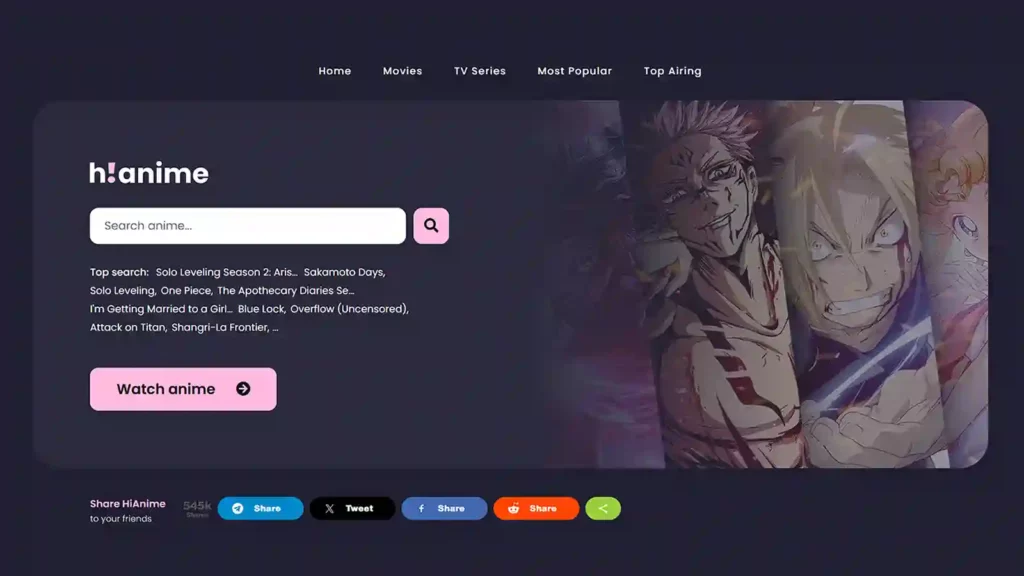Anime piracy websites, despite their illegal nature and exclusion from reputable advertising platforms like Google AdSense, have developed sophisticated strategies to generate significant revenue. These platforms exploit their massive user bases and adopt alternative monetization models to sustain operations while bypassing legal constraints.
Revenue Streams of Anime Piracy Websites

Anime piracy websites primarily rely on low-quality or “grey market” ad networks such as PopAds to display intrusive banner ads, pop-ups, and auto-playing video ads. Many of these ads are embedded with malware or redirect users to questionable websites, further monetizing traffic by exploiting visitors.
For instance, a prominent anime piracy site like HiAnime.to, which reportedly garnered over 331 million monthly visits in late 2024, could earn upwards of $400,000 monthly from ad impressions alone if even half its visitors view these ads without using ad blockers.
This figure is based on conservative estimates of ad revenue, considering that each monetized view might generate around $0.004. In addition to advertising, affiliate marketing plays a significant role in their revenue model.
These websites often include affiliate links to dubious services or unlicensed anime merchandise stores. When users make purchases through these links, the sites earn commissions. This indirect monetization strategy allows them to profit without relying solely on ads.
Some piracy sites have even attempted to launch their own merchandise stores, though these ventures often fail to turn a profit due to their unlicensed nature and lack of brand recognition.
Premium Memberships and Donations
Another lucrative revenue stream is the sale of premium memberships. Very few anime piracy websites offer users the option to pay for ad-free streaming.
These memberships or (count them as donations) are priced significantly lower than legitimate streaming services like Crunchyroll or Netflix and has all the anime there is to watch unlike Crunchyroll or Netflix who are required to buy licenses to have anime on their streaming platform, making them attractive to users who are unwilling to pay full subscription fees for limited content.
Some acknowledge the necessity of supporting the industry legally to ensure the sustainability of anime production. One user on X (Formally Twitter) expressed their frustration,
“It’s pissing me off because some people can’t afford premium and every goddamn anime is locked behind a paywall, it’s infuriating”
Some piracy sites also solicit donations from their user base under the guise of covering server costs or improving website features. This crowdfunding-like approach appeals to loyal users but lacks transparency regarding how the funds are used.
Third-Party Hosting and Data Monetization
Third-party hosting revenue is another key income source. Many piracy sites embed videos hosted on platforms like Openload or Streamango, which pay uploaders based on view counts, typically at rates of $10–$25 per 10,000 views.
By directing users to these hosts, piracy websites earn additional income without bearing the cost of video hosting themselves. Data monetization is a hidden yet profitable strategy employed by these sites.
By collecting user data through cookies and trackers embedded in their websites, they can sell this information to third-party companies for targeted advertising or other purposes. This practice not only generates revenue but also exploits users’ browsing habits without their informed consent.
Cost Advantages Over Legal Platforms
The financial success of anime piracy websites is further aided by their ability to minimize operational costs compared to legitimate streaming platforms. Unlike legal services that must pay hefty licensing fees for anime content, piracy sites operate without such expenses.
They also reduce costs by relying on third-party hosting services for video storage and streaming infrastructure. Furthermore, many of these websites use unpaid volunteers to moderate forums and manage community interactions, further cutting down on expenses.
Estimated Revenue Figures
The revenue generated by these sites can be staggering when considering their massive traffic volumes and diverse income streams. For example, HiAnime.to’s ad revenue alone could exceed $400,000 per month if half its visitors view ads without ad blockers. Annual revenues for large-scale piracy operations could easily reach to million dollar.
Implications for the Anime Industry

However, the success of these websites comes at a significant cost to the anime industry and its creators. The Japanese Content Overseas Distribution Association (CODA) estimates that anime and manga piracy causes annual losses of approximately $14–16 billion globally.
By diverting revenue away from legitimate distributors and creators, these sites undermine the industry’s ability to produce new content sustainably. Additionally, users who engage with these platforms expose themselves to risks such as malware infections and data theft.
The unethical practices employed by these sites not only harm content creators but also jeopardize the safety and privacy of their audiences.
Anime piracy websites have developed innovative yet unethical methods to generate substantial revenue despite being excluded from prominent ad services. Through low-quality ads, donations, third-party hosting revenue, and data monetization, they exploit their user base while avoiding significant operational costs like licensing fees.
Although lucrative for operators, these practices harm the anime industry and pose risks to users. As global anti-piracy efforts intensify such as Japan’s AI-powered detection systems shutting down such sites remains an ongoing battle for the entertainment sector.
Addressing this issue requires not only stricter enforcement but also more accessible and affordable legal streaming options for fans worldwide. By understanding how these sites operate and the damage they cause.
Both consumers and industry stakeholders can take steps toward mitigating their impact while supporting legitimate avenues for enjoying anime content legally, however people should pay to watch anime who can afford to, the culture of anime piracy is not wrong and it shouldn’t be a illegal thing to do in my opinion and piracy has help the anime industry to grow more and more.














